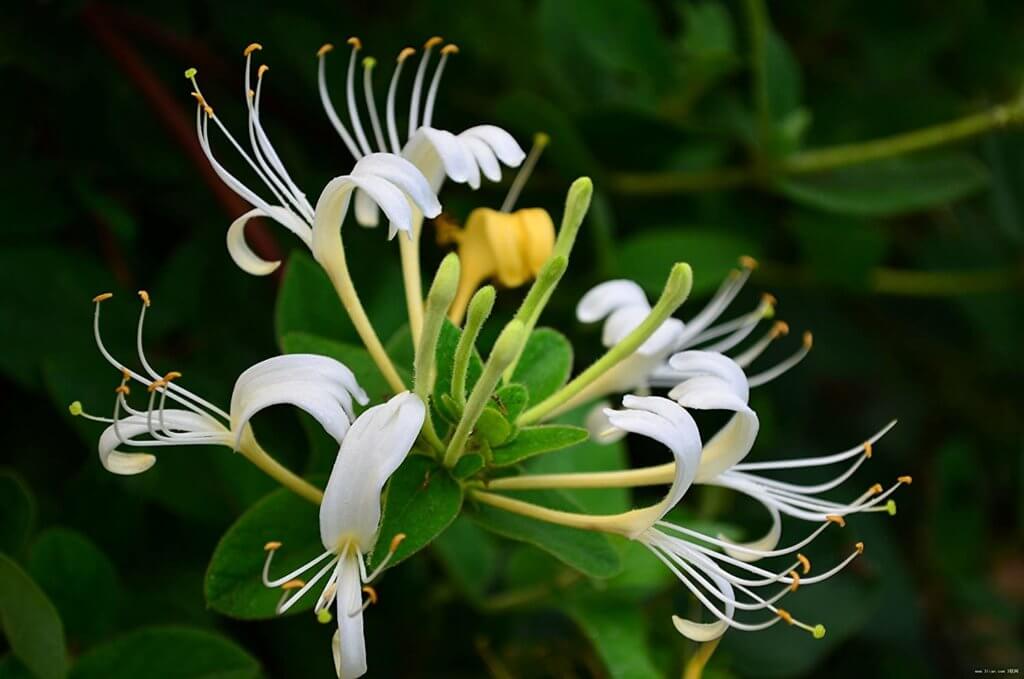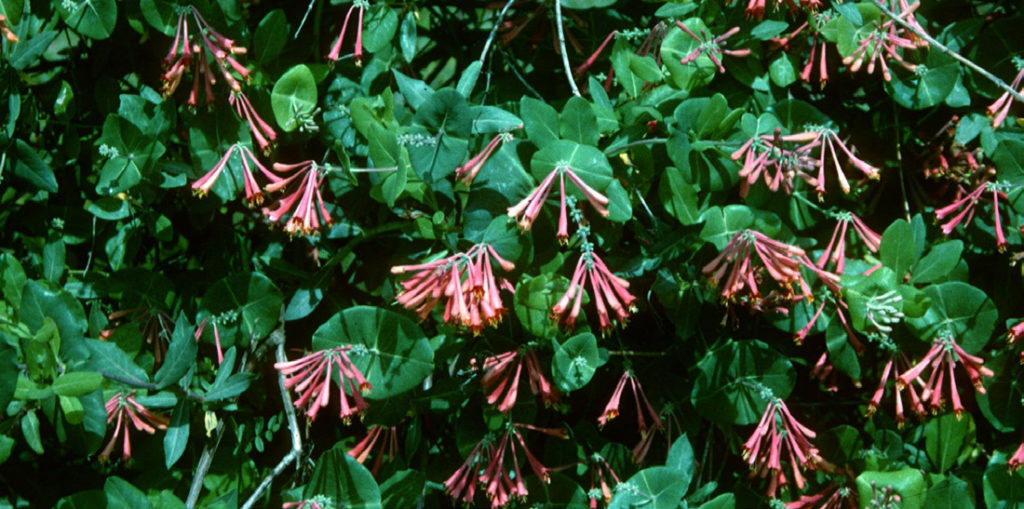Japanese Honeysuckle
Japanese Honeysuckle was introduced into the United States in 1806 as an ornamental selection used for shrub borders, groupings and mass plantings

It is an evergreen, flowering, woody vine that has been favored by many land management professionals and landscapers for decades for its aesthetics, twining habit, and quick establishment. It has also been used in erosion control to help stabilize roadsides and banks and planted as wildlife forage for deer.
Identification
Japanese honeysuckle is an evergreen, woody vine that can be found trailing in forest understories, forest edges and roadsides or found climbing up into forest canopies. Leaves are simple, ovate-oval in shape and arranged oppositely along stems. Spring flowers are fragrant, attractive, and tubular-shaped with delicate, white and yellow petals. Young vines are thin, non-woody, copper colored and covered with fine hairs (pubescent). Stems can grow 80-120 feet long; mature vines can become thick and woody.
How It Spreads
Japanese honeysuckle is abundant in the Mississippi landscape and can be found growing in various habitat conditions, ranging from forest understories to forest floors, to disturbed areas and wetlands.
It is a rapid grower that can quickly out-compete native species for light, space and nutrients, and it is also known to girdle the stems of young saplings. This species is very opportunistic, swiftly establishing in new forest gaps, recently disturbed areas, roadsides and forest edges.
Managing Japanese honeysuckle
Do not plant Japanese honeysuckle. Instead, plant native alternatives, such as Trumpet creeper (Campsis radicans), Virginia creeper (Pathenocissus quinquefolia), Carolina jessamine (Gelsemium sempervirens), Crossvine (Bignonia capreolata), Coral honeysuckle (Lonicera sempervirens) and several others.
Mechanical control by hand pulling or using hand tools, such as loppers, hand saws, hand pruners, to cut stems can be an effective treatment method, especially if repeated regularly and done when soil is moist.
Chemical control using systemic herbicides for foliar application have been effective for control of Japanese honeysuckle, especially if applied during the growing season and under optimum temperature conditions. Special caution needs to be taken when applying herbicides to the landscape to minimize off target impacts and protect native plants and water quality
Alternatives
Instead of Japanese honeysuckle, plant native coral honeysuckle, Lonicera sempervirens. It grows in partial or full sun and can be trained on an arbor or a fence. Hummingbirds enjoy the long, tubular flowers, but bees and butterflies also visit these flowers. The fruits are eaten by quail, purple finches, goldfinches, hermit thrushes, and robins. The caterpillar of the spring azure butterfly feeds on the foliage of this vine.

(Photo by Paul Wray, Iowa State University, Bugwood.org)
Contact MFC for more information
For more information about Japanese climbing fern in Mississippi, contact us at comments@mfc.ms.gov.
